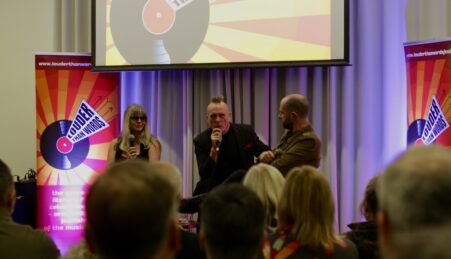By Grace Atkinson
Manchester Metropolitan hosted North West Long Nineteenth Century Seminar, an afternoon of critical lectures centered around the literature, architecture and critical study of the Nineteenth Century, on Wednesday.
The event was introduced by Emma Liggins, a Senior Lecturer at Manchester Metropolitan. She said, “We’re pleased we’ve got four great speakers today, quite a lot of Gothic themes.”
First to speak was Peter Linfield, a historian of architecture, furniture and applied design, and a Leverhulme Early Career Research Fellow at Manchester Met. His first book Georgian Gothic: Medievalist Architecture, Furniture and Interiors, 1730-1840 documents design across the Long 18th Century. Linfield’s talk was on Strawberry Hill, a Gothic villa built under Horace Walpole, in Twickenham.
Linfield introduced the building by saying: “It’s been explored and celebrated repeatedly in modern studies. It was subject to criticism particularly in the Georgian and Victorian periods, where it was considered to be a whimsical and unscientific aberration of Gothic design, particularly because it did not tally with the changing and increasingly studious scientific understandings of medieval forms and motifs.”
Linfield went on to delve into the hidden history of Strawberry Hill, focusing on a Gothic-esc family mausoleum, which was designed but never realised, and on Walpole, who is now considered one of the most significant experimental Georgian architects, and his enthusiasm for displaying the family line.
Next was Deborah Russell, a lecturer in the Department of English and Related Literature at the University of York. Her research specializes in Gothic fiction, Women’s writing and the politics of national identity, and she has had numerous publications in literary anthologies. Russell’s talk discussed the politics of silence on the page and stage in Gothic novels and adaptions.
Russell discussed the different silences and absences in Gothic novel and stage production, and their representation of political obscurity. In this talk, the audience were guided through the different way’s such obscurities were created, and the difference in their representation from the page to the stage.
“The markers of the Gothic aren’t simply empty devices,” said Russell. “They don’t necessarily have a unified political meaning, but the response to, and manipulation of, Gothic obscurity in these texts remains politically productive at a time when silence was resonant and fraught. Each alliteration of the Gothic, on page or stage, is interested in what lies behind the silence.”
Next to speak was Caroline Ikin, a second year PhD student at Manchester Met, whose thesis focuses on Brantwood, a garden created by John Ruskin in the Lake District. Ikin’s talk focused on Proserpina is a book on botany written in the 1870s by the artist, critic, and philanthropist, John Ruskin.
“It is quite unlike any other botany book,” said Ikin. “But then Ruskin’s version of science was quite unlike that of any scientist. Ruskin conceived the book as, in basic grammar, to help people, especially young people, to learn about plants. And he was very concerned about the state of education, and he wanted to preserve the wonder of nature that he felt was being eroded by the processes of mutualism science, he wanted to put back curiosity, and questioning, and discovery.”
Ikin spoke about how Ruskin’s Proserpina is a botany book and an autobiography at the same time. Written in first person present tense, Ruskin’s book on plants is also filled with messages to his forbidden love, Rose La Touche, who Ruskin became obsessively besotted with. After La Touche died aged 27, Ruskin used the book to speak to her beyond the grave, referring to her mainly as a thorny rose.
Last to speak was Emilee Morrallis, a PhD student at Liverpool Hope University and a peer-reviewer for a postgraduate journal published by Exeter University. Her talk focused on Celestina and The Old Manor House, prose written by Charlotte Smith, a predominant writer of the late eighteenth century.
Morrallis said: “I think that if [Smith] is known at all it is by her sonnets, but there has been a revival in the past few years, and a sort of resurge of interest in her, and that’s what I’m trying to respond to. She wrote novels throughout the 1790s, and, for me, I think its interesting that she was so influential for people like Wordsworth and Austen, but there’s a lot less research on herself.”
Morrallis explored the relationship between domesticity, identity, and notions of transition within Smith’s work. Morallis’ paper also looked at the notion of adolescence in Smith’s novels, a space between child and adult that was not fully recognised during the Romantic period, causing Smiths own feeling of exile and so prompting her to write.
The event was then opened up to the audience, where questions could be posed to each speaker to get an even deeper insight into their interesting and informative papers.
“This long nineteenth century seminar continues to bring together the research of postgraduates, early career researchers and established academics, ” said Emma Liggins after the event. “It was fascinating to hear more today about Gothic architecture, drama, science, botany and Romantic women writers, and to see what exciting interdisciplinary work is going on in Romantic and Victorian studies.”
The next event to be hosted by Manchester Metropolitan will be A Hundred Years of Youth 1918-2018, on Thursday 12th April.





Leave a reply